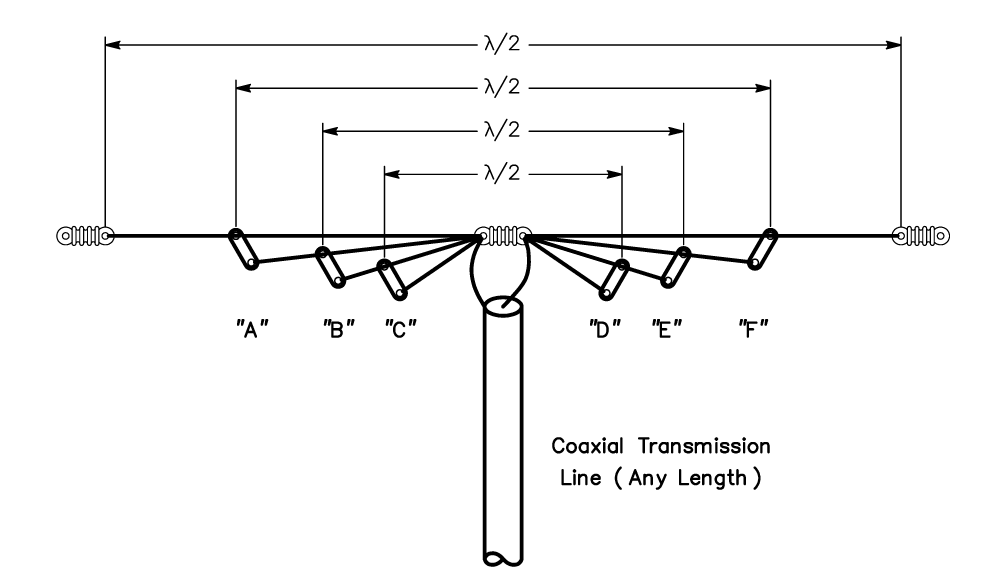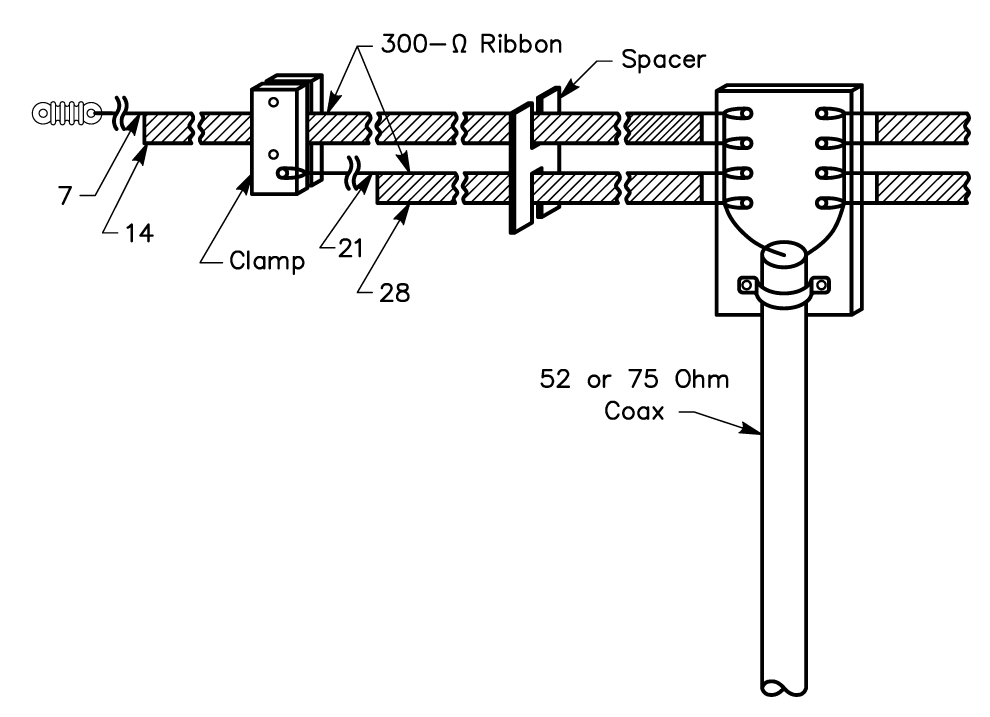 |
| Click on the image to enlarge it |
An extension of the stagger tuning idea is to construct multi-wire dipoles cut for different bands.
In theory, the 4-wire antenna of Fig 14 can be used with a coaxial feeder on five bands. The four wires are prepared as parallel-fed dipoles for 3.5, 7, 14, and 28 MHz. The 7-MHz dipole can be operated on its 3rd harmonic for 21-MHz operation to cover a fifth band. However, in practice it has been found difficult to get a good match to coaxial line on all bands.
The λ/2 resonant length of any one dipole in the presence of the others is not the same as for a dipole by itself due to interaction, and attempts to optimize all four lengths can become a frustrating procedure.
The problem is compounded because the optimum tuning changes in a different antenna environment, so what works for one amateur may not work for another. Even so, many amateurs with limited antenna space are willing to accept the mismatch on some bands just so they can operate on those frequencies using a single coax feed line.
Since this antenna system is balanced, it is desirable to use a balanced transmission line to feed it. The most desirable type of line is 75-ohm transmitting twin-lead. However, either 52-ohm or 75-ohm coaxial line can be used. Coax line introduces some unbalance, but this is tolerable on the lower frequencies. An alternative is to use a balun at the feed point, fed with coaxial cable.
The separation between the dipoles for the various frequencies does not seem to be especially critical. One set of wires can be suspended from the next larger set, using insulating spreaders (of the type used for feeder spreaders) to give a separation of a few inches. Users of this antenna often run some of the dipoles at right angles to each other to help reduce interaction. Some operators use inverted-V mounted dipoles as guy wires for the mast that supports the antenna system.
An interesting method of construction used successfully by Louis Richard, ON4UF, is shown below.
The antenna has four dipoles (for 7, 14, 21 and 28 MHz) constructed from 300-ohm ribbon transmission line. A single length of ribbon makes two dipoles. Thus, two lengths, as shown in the sketch, serve to make dipoles for four bands. Ribbon with copper-clad steel conductors (Amphenol type 14-022) should be used because all of the weight, including that of the feed line, must be supported by the uppermost wire. Two pieces of ribbon are first cut to a length suitable for the two halves of the longest dipole.
Then one of the conductors in each piece is cut to proper length for the next band higher in frequency. The excess wire and insulation is stripped away. A second pair of lengths is prepared in the same manner, except that the lengths are appropriate for the next two higher frequency bands.
 |
| Click on the image to enlarge it |
A piece of thick polystyrene sheet drilled with holes for anchoring each wire serves as the central insulator. The shorter pair of dipoles is suspended the width of the ribbon below the longer pair by clamps also made of poly sheet. Intermediate spacers are made by sawing slots in pieces of poly sheet so they will fit the ribbon snugly. The multiple-dipole principle can also be applied to vertical antennas. Parallel or fanned λ/4 elements of wire or tubing can be worked against ground or tuned radials from a common feed point.
Source: The ARRL Antenna Handbook

No comments:
Post a Comment